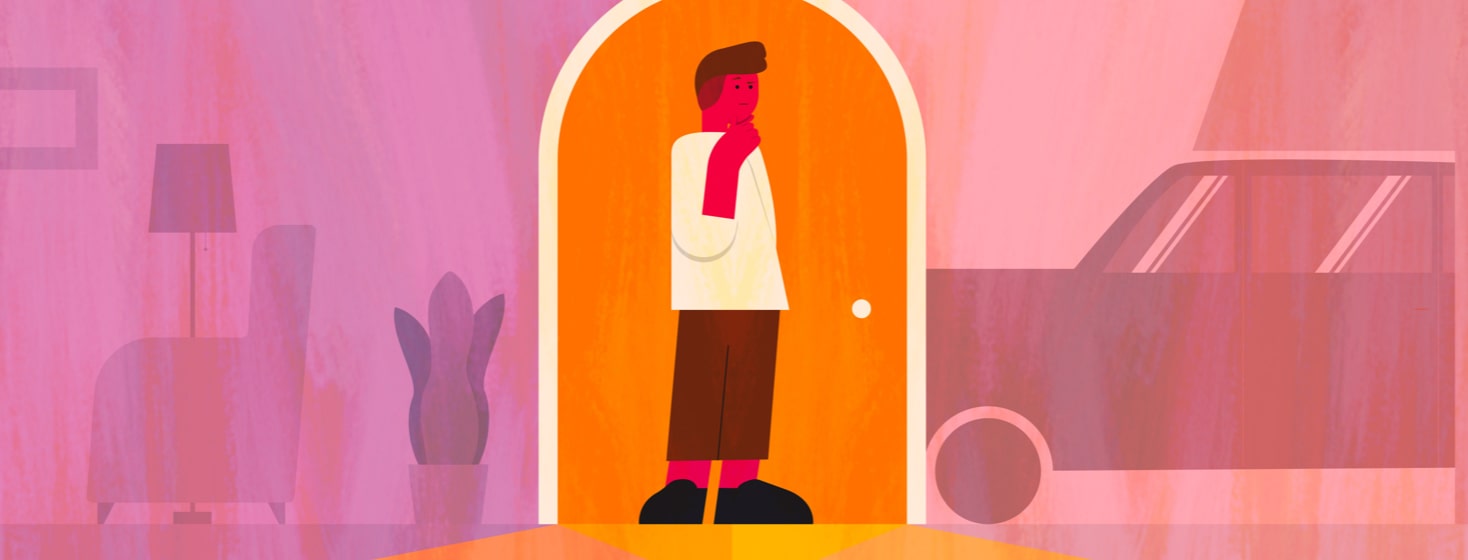To Go Out or Not to Go Out?
Last night, my husband with AxSpa, Keegan, went out for a creativity circle gathering at our Unitarian Universalist church. He’s been struggling with a flare-up for a few weeks now, as the weather in Pittsburgh goes from the low 80’s to below freezing in a matter of hours some days. (Spring isn’t the kindest on his body.) The whole day I wondered whether he’d end up going out. I could see the dark circles below his eyes and the fatigue of taking care of 2 young kids all day on his face.
Surprisingly, when he got home, all of those signs were gone. I asked him, “How’d it go? I was worried about your AxSpa and whether you’d end up going at all.” He responded, “Well, I knew I was going to be tired no matter if I was enjoying myself while doing my art at home or at church.” I hadn’t thought about it that way.
What are some benefits of socializing for those with AxSpa?
While reflecting on his experience, we realized how socializing for him in this case wasn’t actually going to add more fatigue and stress. Rather, it provided a space to reset and connect. In general, he found that in best case scenarios, socializing provides:
- Emotional support: A space to vent, laugh, and relax with others while also doing something creative to let go of the stress of the day.
- Distraction from symptoms: Although the getting ready and driving weren’t the most fun, once he was there and engaged in conversation, the focus from his symptoms transitioned to his art and discussions with others.-
- Improved mood: Keegan not only looked more energetic, but sounded more energetic. Having a low-effort physical activity coupled with a comfortable space meant he could just relax, let go, and enjoy the moment. This allowed his mood to become more positive and gain mental and emotional energy.
How does Keegan know when he can push through the symptoms?
I was most curious about how Keegan knew he’d be able to go even through all these flare-up symptoms he’d been having. He told me he rethought his expectations and goals of the experiences, for instance:
- Going doesn’t have to mean going for the entire time. The gathering lasted for 2 hours from 6:30-8:30 pm. He told himself that even if he only stayed 30 minutes or an hour, it’d be worth the time.
- Finding an activity that's low effort and easy to manage through movement and diet. Doing art in a group setting meant he could pace himself when it came to providing his body with what he needed during a flare-up. For instance, he knew he’d need a salad to stick to his mediterranean diet and brought along a big bottle of water. (As opposed to an activity that requires a significant modification to his activity level or the need to eat food that could worsen symptoms.)
- Take needed medication right before going. Keegan’s doctor allows him to take Motrin (aka ibuprofen) and Tylenol (aka acetaminophin) on a rotated schedule for pain management. So, Keegan timed his medications so they would begin their effect at the start of the gathering.
- Sometimes, he just needs to find someone to listen. Even if it's only for a little bit, talking to others about being a stay-at-home parent provides so much relief that it's worth the challenge of getting ready and getting there.
Being social can be draining for many with AxSpa, but Keegan is finding new ways to relax and regain energy through social experiences in our local community. It takes some finessing, but is ultimately rewards him with a sense of purpose, joy, and belonging. How do you fit in socializing into your AxSpa journey?

Join the conversation